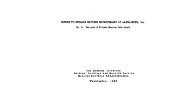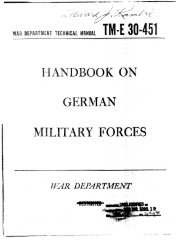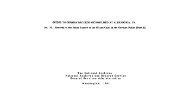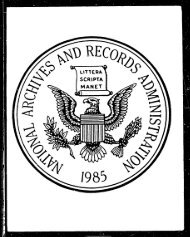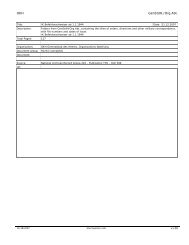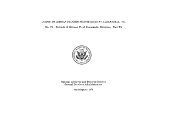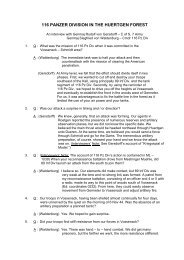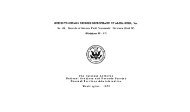miRS-tonpon - Sturmpanzer.com
miRS-tonpon - Sturmpanzer.com
miRS-tonpon - Sturmpanzer.com
Create successful ePaper yourself
Turn your PDF publications into a flip-book with our unique Google optimized e-Paper software.
, _ .-^^-^^-^sson of aDienstbuch (Pay and Identitybpok) by the desicneeT^md his right to oariy arms for personaldefence;2) It entitled the designee to Frontarbeitersold or wehrsold (Frontline duty allowance). When OT began to employ foreign labour enmasse, the designation "Frontarbeiter** was extended to includeVolksdeutsohe (Racial Germans) and Nordic volunteers.108. DAP/FrontftihrungThe DAP's Social Service was absorbed at the outbreak of warby a newly created department^ in the OT, the Frontftihrung, (FrontArea Personnel Section). Its leader, the Frontfuhrer, however,continued to represent in his person the DJiF s interests in the OT,inasmuch as he remained an official in the former organization.(See IIG94i).109. "Mobile" period 1940/42 (inclusion of foreign,at the expense"of German,elements).The personnel of this earlyOT organisation were graduallyabsorbed into the German Armed Forces during 1941/42. Only thoseremained who did not meet physical or mental requirements, or weredeferred because of essential occupations, such as OT-firmexecutives, technicians and administrative chiefs. The Germanworker personnel with physical short<strong>com</strong>ings became a supervisorycadre over foreign worker units, as soon as the latter becameavailable en masse after the campaigns of 1939/1941.110. "Mobile" period 1940/42 (OT-Firms, Bautrupps, Services, SK,OBLHQ personnel).When sne "West Wall 11 was <strong>com</strong>pleted at the end of 1940, the OTpersonnel moved out of Germany following the German armies inPoland, the West and the Balkans. (OT did not engage in constructionwork, to any large extent, in Norway until the winter of1940/41) • Their first tasks were the restoring of <strong>com</strong>municationsof all types and assuring the safe flow of army supplies to thevarious fronts. In fact, up to well into 1941, OT personnelexecuted its tasks more in the mobile manner of rear echelon azmyengineers than in that of a separate organisation with a oentralisedadministration of its own. The fizms constructing the Channeldefences along the North Sea coast in 1940/41, for example, insofaras they were controlled from BERLIN, were administered by the semiautonomousConstruction Industry through large building corporationssuch as Strabag, rather than through the "mother 11 administration,the General Inspektor fttr des deutsche Strassenwesen (inspectorateGeneral for German Roadways) .In relation to the OT, therefore, the picture which generallyheld until about mid-year 1941 in Poland, Norway, the Balkans andeven to some extent in the West, was one of construction firms inthe form of <strong>com</strong>paratively small units specialising in bridge construction,harbour construction, road and canal construction andso forth. These firms worked in close liaison with the axmy. Thwere mobile within the limits of their own operational sector andconsisted of the firm executive and his clerical and technicalstaff. The firm executive was, at the same time, theOT ConstructionExecutive with a corresponding OT rank, normally that of a2nd or 1st Lieutenant. His staff likewise were members of the OTbut moved with their employer from job to job. His sphere assupervisor of construction included the supervision of all OTworkers within his Baustelle (construction site). As alreadystated, moat of the Facharbeiter (skilled labourers) in thebeginning were stil l German. They were divided into "Bautrupps"




